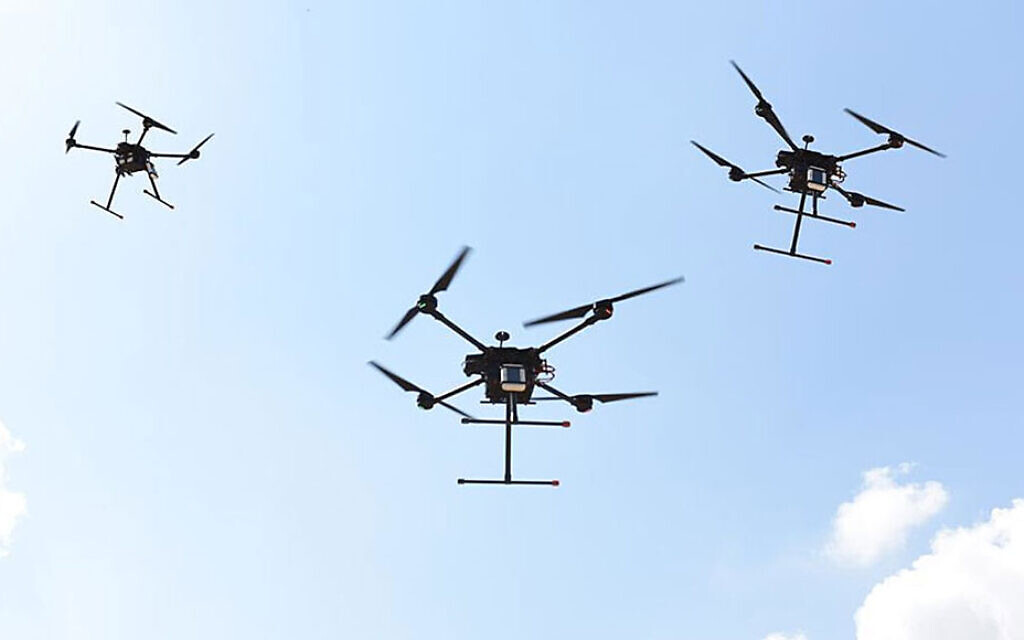Moving towards synchronized and swarming autonomous drones
Unmanned drones and aerial vehicles are available in a great diversity depending on their basic frameworks within their particular specifications. We can analyse the core characteristics of swarming drones, and the functionality, importance, problems of drones will be highlighted. Swarms of drones are fundamental future agenda and will be adopted with the passage of time.
A set of aerial robot drones that work together to achieve a specific goal is known as a swarm or fleet of Unmanned Aerial Vehicles (UAVs). Each drone in the swarm is propelled by a specific number of rotors and has the ability to vertically hover, take-off, and land (VTOL). The flight of drones is controlled autonomously by using processors deployed on the drones. Indeed, swarms of drones provide a promising platform for commercial applications that will help people in their work.
Swarms of drones can be classified as fully and partly semi-autonomous swarms. The classification can be envisioned in single-layered swarms with every drone being its own leader and multi layered swarms with dedicated leader drones at every layer, which report to their leader drones at higher layers with a ground-based server station acting as the highest layer in the hierarchy. Each drone will have a dedicated data collection capability and processing/executing tasks in real time. Central processing takes place on the server base station or in the cloud.
Advanced sensors deployed on UAVs allow the use of them for different purposes, creating a new breed of applications and services in the sector of unmanned operations.
UAVs have been deployed in surveillance mission with versatile and low-cost drones being utilized in aerial surveys, for monitoring and security. For instance, surveillance of a facility might require updates of every moment detected after office hours. Manual surveillance would require a lot of manpower in regards to a large facility or environment. In this case, a swarm of drones can monitor the area much more efficiently with minimal manual effort, by autonomously sending alerts to the base station upon detection of any anomalies.
A swarm or fleet of UAVs with smart monitoring system can reliably cover a given area by utilizing several parallel operating drones.
Due to recent advances in manoeuvrability and payload capacity, quadcopter drone surveillance systems are gaining more attention. A set of algorithms can be used on these types of drones for tracking detected targets. The drone swarms are modelled as a multi-agent system to facilitate cooperation of the agents ensuring safety during execution of a mission. The developed path tracking method was found to enable smooth and safe navigation even in a dense environment.
The study of multi agent drone swarms has intensified due to their cooperative behaviour. Automating the control of a swarm is challenging as each drone operates under environment constraints, fluctuating wireless and networking issues.
Drones, otherwise called Unmanned Aerial Vehicles (UAVs), are autonomous agents that have a large set of applicability scenarios, due to their versatility, low cost and easy deployment. Several drones collaborate with each other in a drone swarm to perform tasks more efficiently while providing coverage for large geographic areas.

